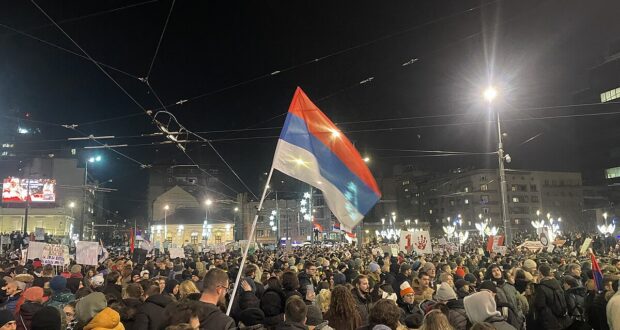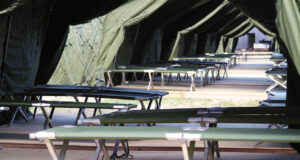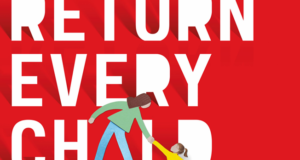15 November, 2025
By Irena Baboi – Senior Fellow
For the past twelve months, mass student-led protests have been challenging the authoritarian rule of Serbia’s long-term leader Aleksandar Vučić. The catalyst for some of the biggest anti-government demonstrations in Serbia’s history was the collapse of a newly renovated railway station roof in the country’s second largest city, Novi Sad, which led to the deaths of sixteen people. The tragedy has been widely considered a consequence of negligence on the part of local and national authorities, and the entrenched fraud and corruption of the system ruled for thirteen years by Vučić’s Serbian Progressive Party (SNS). Although largely student-led, the protests have seen many different groups taking part, from professors and lawyers to farmers and workers across the country and throughout the year since the demonstrations began. The railway station roof collapse has re-ignited calls for change and democratic reform – and the Serbian people are demanding a new era of transparency, accountability and respect for their fundamental rights, freedoms and livelihoods.
The renovation of the railway station roof in Novi Sad was one of the many projects boasted by the Serbian government as evidence of its success in attracting foreign investment. The roof that collapsed was renovated with funding from China’s Belt and Road Initiative (BRI), an ambitious development campaign that utilises China’s domestic overcapacity for infrastructure development and industrial production to invest in countries where other national governments or international financial institutions have been reluctant to invest. The renovation work on the railway station began in 2021 as part of a Chinese-led upgrade of Serbia’s railway infrastructure between Belgrade and Budapest, which has become a symbol of Serbia’s growing cooperation with China. Progress on the railway station was unveiled in 2022 during that year’s general elections campaign, but the reconstruction continued until July 2024, when local authorities declared the station had been rebuilt “according to European standards”. The reality, however, is that infrastructure projects funded by China often lack transparency, with respect to both the project-related procurements and to the contracting legislation. According to general Chinese procedures, all projects implemented with Chinese funding need to be implemented by a Chinese – usually state-owned – enterprise. The contractor is not chosen through public bidding, but either directly determined by the Chinese government, or selected by local authorities among several companies pre-selected by Chinese institutions. Infrastructure projects funded by Beijing are implemented without the pressures of regulatory oversight or strict compliance with international standards, and bad governance structures, corruption and political patronage networks are all perpetuated through these Chinese investments.
The current and ongoing protest movement began with the Serbian people seeking justice for the victims of the railway station roof collapse and an investigation into the corruption considered to have caused the tragedy. Serbian President Vučić and Minister of Construction Goran Vesić initially claimed the railway station roof was never reconstructed, despite there being news articles and videos about the reconstruction available online, including ones showing Vesić officially opening the reconstructed Novi Sad Railway Station. Faced with public outrage, Vesić announced his resignation, but declared that he “does not feel responsible” for the Novi Sad tragedy. The Minister of Construction was arrested in December along with thirteen others, but let go after six days, and has reportedly kept his party rank within the SNS. Among the other thirteen arrested were Jelena Tanasković, acting director of Serbian Railways Infrastructure at the time of the incident, Anita Dimovski, acting assistant construction minister, and Nebojša Šurlan, general director of Serbian Railways Infrastructure at the time when the Novi Sad railway station was being rebuilt. The other nine were representatives of construction design companies, construction contractors, and technical and expert supervisors. The Higher Public Prosecutor’s Office in Novi Sad declared that “the indictment was brought … due to justified suspicion that they have committed a serious offence against general safety … caused general danger … and [for] irregular and improper construction works”.
As demonstrations showed no signs of relenting despite these arrests, the Serbian government also released thousands of documents related to the Novi Sad railway station reconstruction. Critics, however, argue that key details about the project have still not been clarified or made available to the public, including how much the Serbian government committed to pay for specific sections of the Belgrade to Budapest railway line, and the reconstruction of the Novi Sad and other train station buildings. President Vučić and his government have also been accused of merely trying to appear transparent while, in fact, deepening confusion about the reconstruction project. In January, Serbian prime minister Miloš Vučević and Novi Sad mayor Milan Đurić – both SNS party members – resigned, but by this point, the demonstrations had already turned into calls for President Vučić’s resignation and early elections. By March 2025, the protests spread to four hundred cities and towns across Serbia, and at their peak, they saw more than 300,000 people – roughly five percent of Serbia’s entire population – take to the streets of Serbia’s capital, Belgrade.
While the railway roof collapse was the trigger for the current and ongoing demonstrations, resentment against Vučić’s rule has been building for years, and in the last decade in particular, mass anti-government protests have become more of a regular occurrence in Serbia. In April 2017, days after Vučić won the presidential elections by a large margin in the first round, thousands of people took to the streets of Belgrade, Novi Sad, Niš and Kragujevac to protest what they saw as a fraudulent result. A second wave of demonstrations began in November 2018, triggered by the attack and beating by masked men of opposition politician Borko Stefanović in the southern Serbian town of Kruševac. The protesters also demanded an investigation into the attempted murder of online journalist Milan Jovanović, whose home in the Belgrade suburb of Vrčin was set on fire on 12 December, and justice for Kosovo Serb politician Oliver Ivanović, whose murder was yet to be resolved. In May 2023, a third wave of protests erupted when two mass shootings, one of them at a Belgrade elementary school, claimed seventeen lives, eight of them children. The December 2023 parliamentary elections sparked further protests, with the main opposition alliance, Serbia Against Violence, calling for the vote to be annulled and rerun. Last year, before the Novi Sad railway station tragedy, the Serbian people took to the streets to protest against plans to mine the country’s Jadar Valley – where one of Europe’s largest deposits of lithium is located –, voicing their concerns over possible dangers to public health and contamination of land and water.
In the face of growing calls for his resignation and early elections, Vučić has employed classic attempts to distract attention, and sought to behave as if his house is in order. On 1 September, while tens of thousands demanded justice on the streets of Belgrade and other Serbian cities, the Serbian President joined Putin and other leaders critical of Western-style democracy at a large military parade in Beijing. The same month, on 20 September, Vučić staged his own show of strength, with soldiers and tanks taking part in a military parade in Belgrade as Russian-bought MiG-29 fighter planes flew overhead. In true autocratic fashion, the Serbian president has dismissed the protesters as “terrorists”, claimed that foreign agitators were seeking an “imported revolution”, and launched a crackdown on civil society groups that receive foreign funding. On the streets, orchestrated mobs have attacked protesters and allegedly looted businesses owned by opponents of President Vučić, and there have been widespread reports of police brutality. The protests intensified over the summer, culminating in violent clashes between the students and the police in August and September. Protesters have repeatedly faced repressive efforts meant to force them to back down, including police violence, arrests, home searches, and online threats.
The ongoing protests in Serbia, along with Vučić’s reaction to them, show how the Serbian leader’s politics have changed in the time his party has been ruling the country. In the 2012 elections that brought them to power, the SNS with Vučić at their helm campaigned on a pro-European Union platform. First serving as deputy prime minister before becoming prime minister in 2014, Vučić won praise for seeking to resolve long-standing tensions over Kosovo’s status as a sovereign country. A decade ago, it was Vučić who led his country’s negotiations with the European Union over a so-called normalisation of relations with Kosovo. The Serbian leader also showed willingness to improve Serbia’s ties with neighbouring Bosnia-Herzegovina. In 2015, in spite of local hostility, Vučić labelled the massacre of Bosniak men and boys by Serbian paramilitaries a “monstrous crime”, and visited Srebrenica to pay his respects to the victims of the 1995 genocide. Seen as a reformer both internally and internationally, Vučić succeeded in attracting foreign investments for his country, created economic stability, and improved Serbia’s reputation on the world stage. On the European Union front, Serbia was granted candidate status in 2012 and opened accession negotiations in 2014, and the Western Balkan country was considered a frontrunner for membership from early on in the integration process.
The Serbian leader’s increasing authoritarian tendencies, however, became evident by 2017, when Aleksandar Vučić won that year’s elections and secured his position as president of his country. Externally, Vučić has changed his mind on Kosovo, and now pledges to focus his efforts on protecting the rights and interests of Serbs living there. The Serbian president has also portrayed Kosovo’s Albanian Prime Minister, Albin Kurti, as the main obstacle to any normalisation deal between their two countries. Vučić has also backtracked on Bosnia-Herzegovina, and has expressed support for the long-term Bosnian Serb leader of Republika Srspka, Milorad Dodik, who has been barred from office by the country’s constitutional court, but defies that ruling. Domestically, the ruling SNS have steadily eroded political rights and civil liberties by putting increasing pressure on the independent media, the political opposition, and civil society organisations. In 2023, the OSCE found that Serbia’s parliamentary elections were marred by media bias and the use of government patronage networks to influence the vote, and noted a number of irregularities on election day, including procedural shortcomings, vote buying, breaches in the secrecy of the vote, and instances of group voting. For the past more than a decade, Vučić has garnered the power of the state to serve his own political interests, and control every aspect of the system to maintain himself as leader of the country.
While the president role is largely ceremonial, and his constitutional powers are limited, Vučić holds a commanding majority in the Serbian parliament, and has kept his role as leader of the ruling SNS. In December 2023, Serbia held parliamentary elections for the third time in less than four years, and the incumbent SNS-led coalition won 47 percent of votes, giving it an absolute majority of 129 parliamentary seats. The Serbian president also wields considerable influence over most instruments of the state, including the media, and his government controls all private television networks with national coverage in Serbia. In his letter of resignation, Minister of Trade Tomislav Momirović pledged his “eternal loyalty to president Vučić”. A different high-ranking member of the ruling SNS, Vladimir Đukanović, commented on X days after the railway station collapse: “We must fight against anarcho-terrorists, fake commie intellectuals, the pseudo-elite that is ravaging Serbia with anti-Serbian attitudes. It is time to stop this social scum. In every place and at every step. First of all, in every discussion, and God forbid, if necessary, with force. This scum will no longer be able to terrorize this country. Long live Serbia and just fight bravely”. Not only has Vučić not criticised these types of public statements on the part of those surrounding him, the Serbian leader has responded to the protests with escalating rhetoric and repression of his own, vowing to free the country “from terror and evil”.
On the international front, Vučić has played the perfect balancing act, and has simultaneously maintained strong ties with Russia by refusing to fully align with the European Union on sanctions, attracted significant investment from China, and granted the European Union crucial access to Serbia’s significant lithium reserves. Although Vučić claims that Belgrade remains committed to joining the European Union, Serbia has a free trade agreement with the Russian-led Eurasian Economic Union (EAEU), and is the first European country to become part of China’s alternative to the United States–led liberal international order, the “Global Community of Shared Future”. Both Russia and China have given their full support to Vučić, backing his position that Serbia is the victim of a Western conspiracy, and that unidentified foreign security services are financing the protests. Vučić himself has accused the European Union of duplicity and anti-Serbian prejudice, and labelled the student-led movement as a Western-led “colour revolution” aimed at a politically-motivated regime change.
In the midst of trying to prevent Serbia from becoming even closer to Russia and China, and wanting the lithium mining project in Serbia’s Jadar Valley to become a reality, the European Union’s response to the ongoing political and social crisis has been ambivalent. Publicly, European Commission President Ursula von der Leyen visited Belgrade in October as part of her regular tour of the Western Balkans, maintaining her scheduled meeting with a government that no longer enjoys public support. At the same time, von der Leyen also met with representatives from Serbia’s civil society – the only meeting of this kind in her regional tour – and announced that the European Union stands ready to support Serbia in building a stable democracy. The European Parliament has also adopted a resolution strongly condemning “the ongoing political polarisation and state repression” in Serbia. Privately, Serbia’s membership ambitions have faced a setback in recent years. Stalled reforms, political unrest, the intensifying of relations with China and the Western Balkans country’s continued alignment with Russia have all contributed to a raise in scepticism among EU official over Serbia’s commitment to the European path. Consequently, the European Commission has delayed a €111 million (approximately £98 million) payment from its Growth Plan for Serbia until the latter fulfils the necessary reform conditions and engages constructively in the so-called normalisation of relations with Kosovo. The European Union now also considers Montenegro and Albania frontrunners for membership by 2029, leaving Serbia behind in its integration aspirations. In January this year, a public letter from leading Serbian activists to the European Union specifically asked the Commission to be more vocal in condemning the protests. The letter underlined that “the rule of this regime all these years would not have been possible without, unfortunately, a very ambivalent and inconsistent policy of the European Union towards Serbia”.
If Vučić counted on the anti-government protests dissipating by now, he severely underestimated the Serbian people’s resilience and determination. For an entire year, the people out in the streets have been organising vigils, blockades, strikes and rallies, creating deadlocks and maintaining consistent pressure on their government, even in the face of a violent and repressive response from authorities at all levels. The Novi Sad railway station roof collapse served as a reminder of how dangerous corruption can be, and the Serbian government’s attitude in its aftermath showed that this is not a ruling elite that governs with their people’s best interests at heart. Vučić’s half-hearted calls for dialogue have been met with refusal, and any kind of communication between the people and the current ruling elite will only take place in the context of an election campaign. The Serbian people’s demands are clear – and a few token arrests and resignations do not equal the political and social change and formal accountability on the part of its leaders that Serbia needs to return to its path of progress and democratic development.
October 5th 2025 marked twenty-five years since the so-called Bulldozer Revolution, when similar mass anti-government protests brought down long-term Serbian President Slobodan Milošević and his authoritarian rule. Back then, like now, it was the deteriorating rule of law and systemic corruption, along with crackdowns on the opposition, non-government organisations and the independent media that galvanised many different sections of Serbia’s population against their government. And back then, like now, a nationalist leader that had ruled the country for over a decade refused to step down – seemingly forgetting that it is the people who grant you power and legitimacy, and it is the people who can take that power and legitimacy away.
Image: Belgrade, Slavija Square: On December 22, 2024, a large anti-government protest took place after the railway station’s canopy collapsed on November 1, killing 15 people. (Source: VOA)
 Human Security Centre Human Rights and International Security Research
Human Security Centre Human Rights and International Security Research




